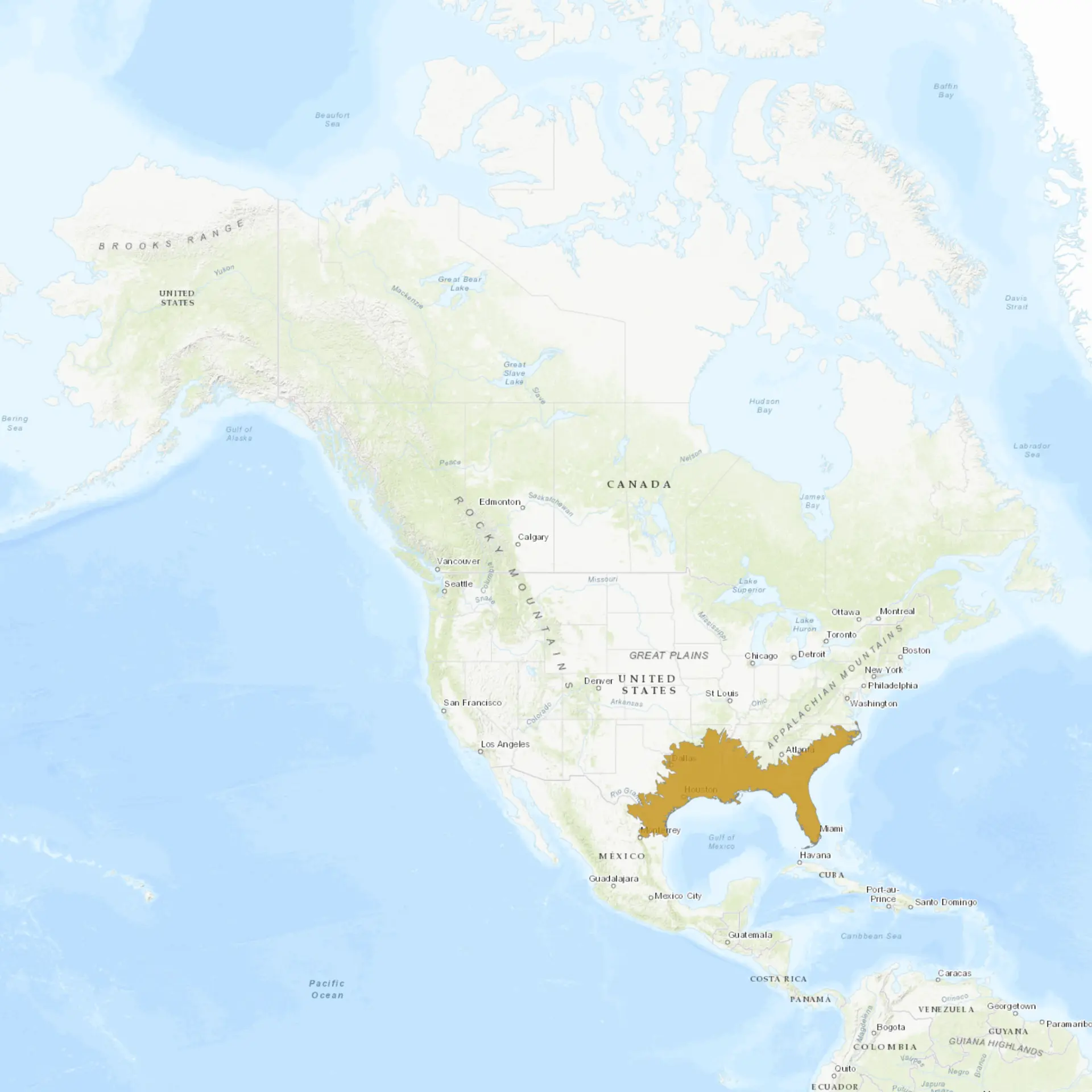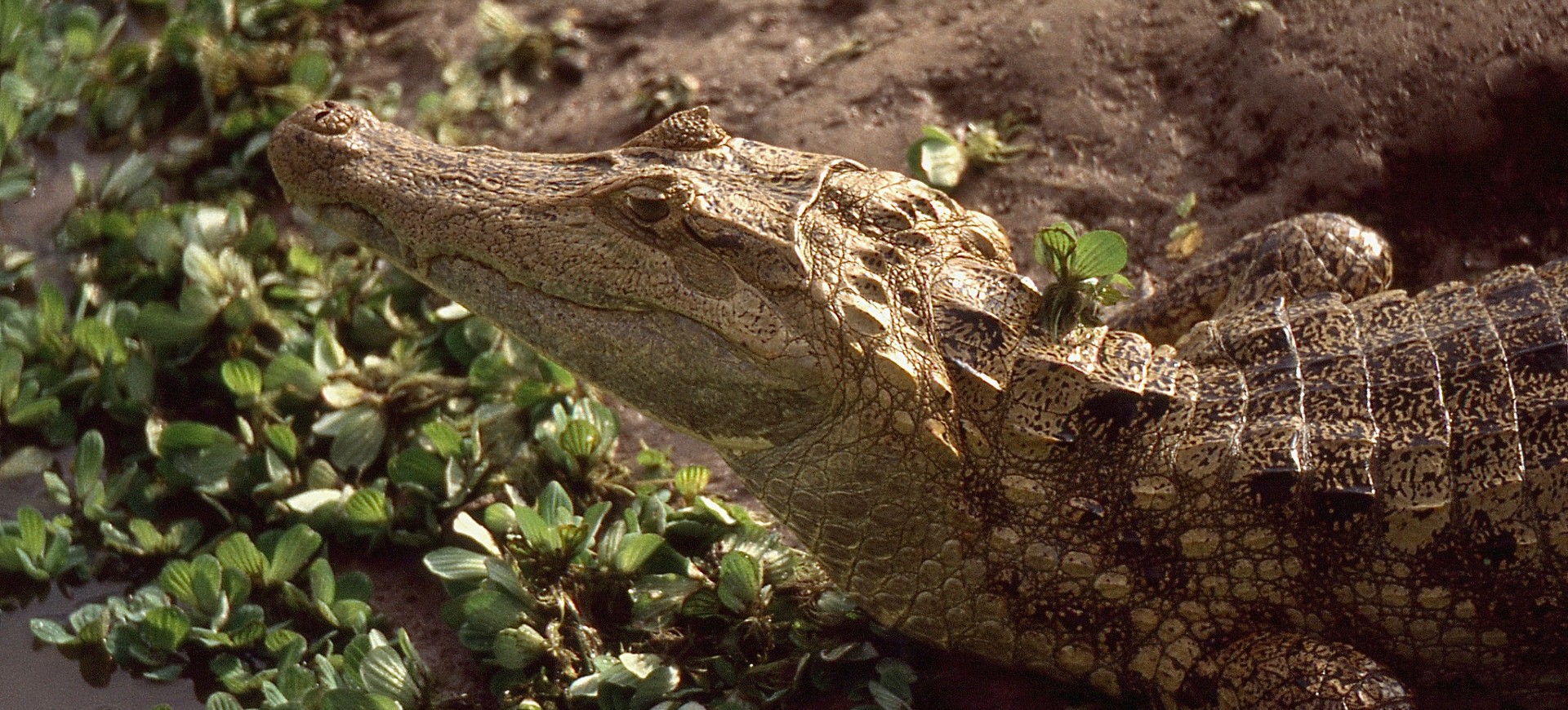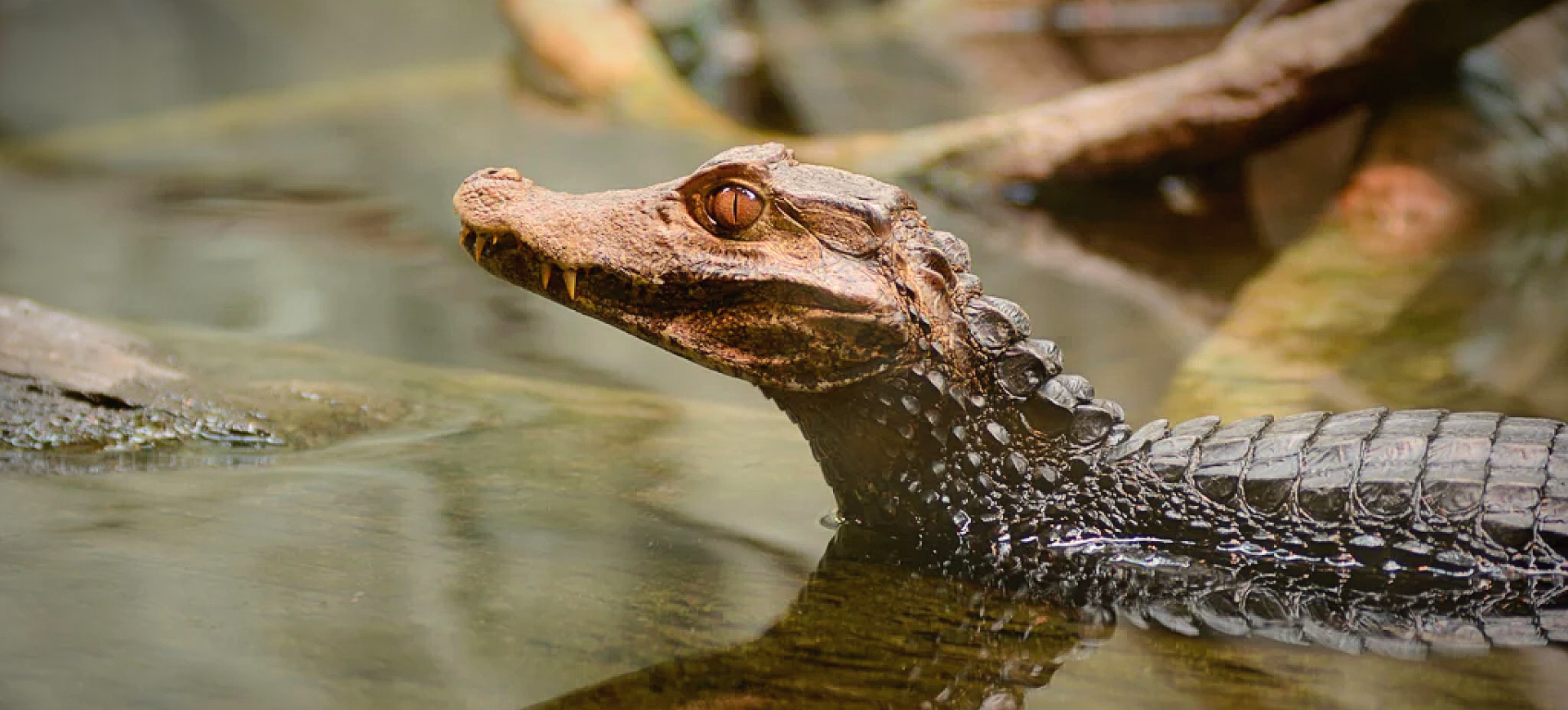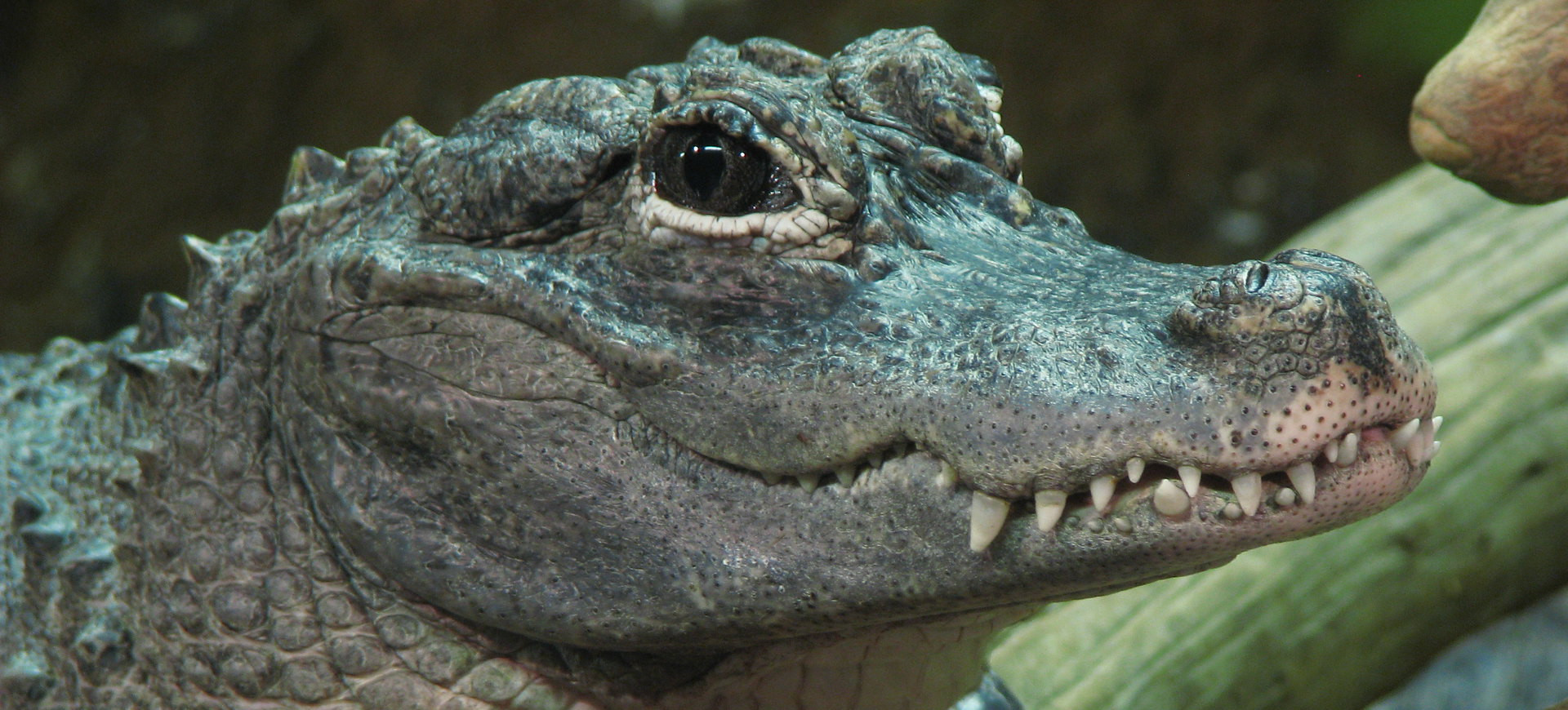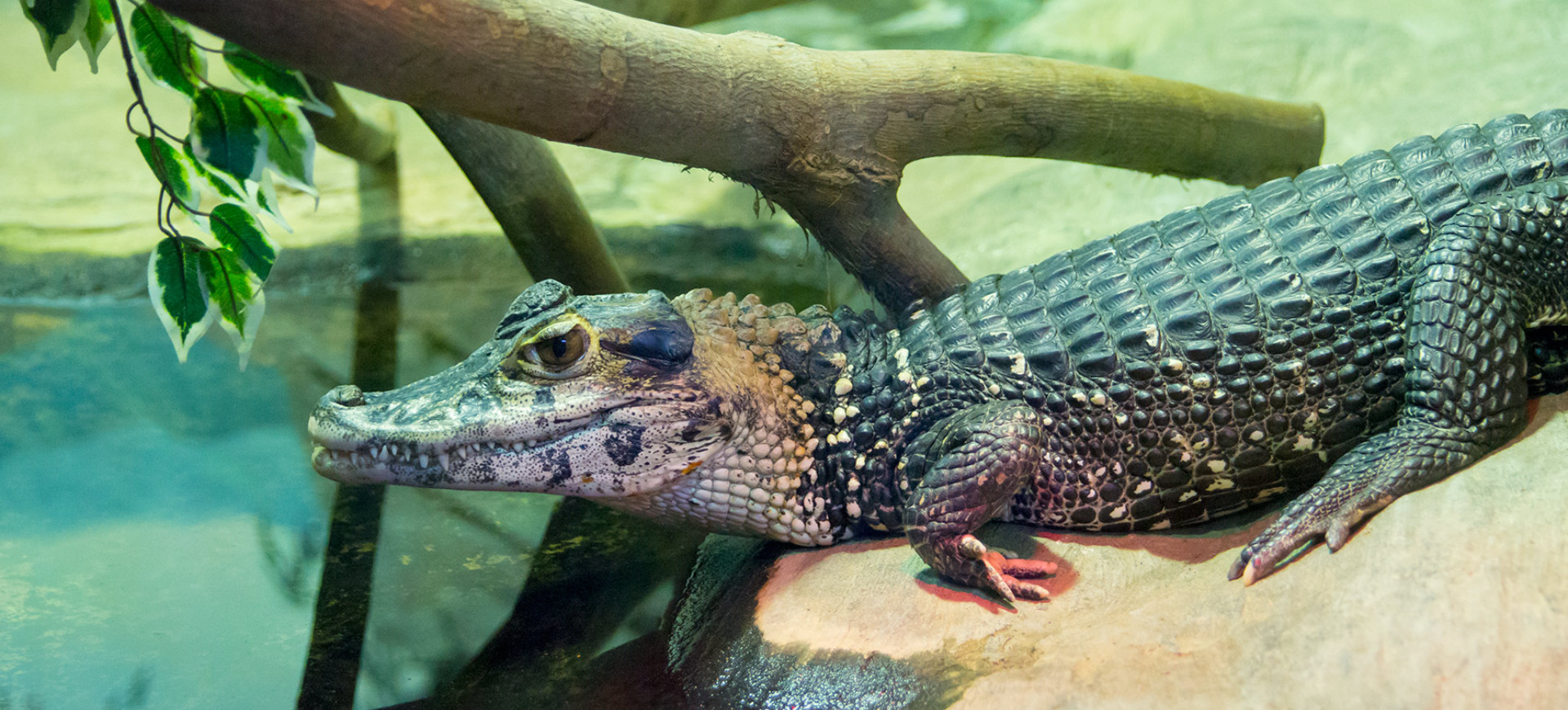Overview
The American alligator is a large, semi-aquatic reptile native to the southeastern United States, known for its powerful body, broad snout, and thick, armored scales. It is one of the two living species in the genus Alligator and is closely related to crocodiles, though it differs in behavior, habitat, and appearance. This apex predator is found in freshwater habitats such as swamps, marshes, rivers, and lakes, where it plays a crucial role in maintaining the balance of aquatic ecosystems. Once endangered due to overhunting and habitat loss, the species has remarkably recovered thanks to extensive conservation efforts.
American alligators are highly adaptable and have been known to inhabit both wild wetlands and man-made water bodies. They are ectothermic animals, relying on external heat sources to regulate their body temperature. They often bask in the sun or retreat to shaded or underwater areas. These reptiles are opportunistic feeders, preying on various animals, from fish and amphibians to mammals and birds. Despite their fearsome reputation, they avoid humans unless provoked or habituated to human activity.
American alligators are highly social reptiles. They often gather in groups, particularly during the breeding season or while basking. They communicate using a range of vocalizations, including bellowing, hissing, and grunting, which are particularly prominent in males during mating displays. Juveniles are notable for their high-pitched chirping, which helps them communicate with their mothers. This species is a conservation success story, now listed as “Least Concern,” though habitat loss and climate change remain ongoing threats.
Taxonomy
Kingdom
Phylum
Class
Order
Family
Genus
Species
Type
Current distribution:
American alligators are native to the southeastern United States, extending from eastern Texas and Oklahoma to North Carolina and Florida. They are particularly abundant in the Gulf Coast states, such as Louisiana, which has the largest alligator population in the country. Florida is the only state where American alligators and crocodiles coexist, though their habitats and behavior differ significantly. The species has also been introduced to other areas, including China and regions outside its natural range, though these populations are not self-sustaining.
Conservation efforts have allowed the American alligator to expand its range, even in urban and suburban environments where wetlands have been preserved or restored. Despite their recovery, habitat destruction, water pollution, and climate change continue to impact their distribution in certain areas. Expanding human populations into wetland areas increases the likelihood of human-alligator interactions, which can lead to conflicts. Continued monitoring of their distribution is essential for ensuring long-term coexistence between humans and alligators.
Physical Description:
American Alligators are characterized by their substantial, somewhat rounded bodies and sturdy, robust limbs. Their long, muscular tails serve dual purposes, facilitating effective propulsion in the water and providing balance while on land. They have a long, broad snout with 80 sharp, conical teeth, well-adapted for seizing and securing prey, though not for chewing.
Their bodies are armored with dark, waterproof skin, solidifying against predators. Embedded within this skin are bony plates, known as osteoderms, offering an added layer of protection. These anatomical adaptations contribute to the alligator’s survival in its environment, making it a formidable inhabitant of its waters and lands.

Lifespan: Wild: ~50 Years || Captivity: ~60 Years

Weight: Males: 1,000 lbs (454 kg) || Females: 200 lbs (91 kg)

Length: Male: 15 ft (4.6 meters) || Females: 10 ft (3 meters)

Top Speed: 20 mph (32 km/h)
Characteristic:
Native Habitat:
The American Alligator is an iconic inhabitant of the southeastern United States, primarily thriving in freshwater ecosystems such as swamps, marshes, rivers, and lakes, extending from North Carolina to Texas’s Rio Grande. These environments offer the alligators ample resources; the dense vegetation in the marshes and swamps, the meandering rivers’ paths, and the vast expanses of lakes serve as ideal hunting grounds and shelter.
Beyond the wilderness, the alligators have demonstrated impressive adaptability, extending their domains into human-altered environments such as retention ponds and irrigation canals. Even though their preference leans towards freshwater, American Alligators possess a degree of salinity tolerance, allowing them to venture into brackish waters near coastal areas. This adaptability underscores their resilience in the face of habitat variations and human encroachment, further enriching their intriguing ecological profile.
Biomes:
Biogeographical Realms:
Continents:
Countries:
Diet:
Diet & Feeding Habits:
American Alligators exemplify carnivorous opportunism, consuming whatever prey is most readily accessible. The variability in their diet is contingent on their size and age. Younger alligators primarily feed on smaller prey such as insects, amphibians, and small fish, thus adhering to an age-appropriate dietary pattern.
As they grow older and larger, their diet expands to include more substantial prey. Adult alligators often consume larger fish, turtles, snakes, birds, and mammals. Large adults can subdue and consume sizeable prey such as deer and hogs. They display a unique “death roll” behavior, spinning to tear off substantial chunks from their larger prey.
Mating Behavior:
Mating Description:
American Alligators reach sexual maturity once they grow to approximately six feet. This milestone generally occurs when they reach an age of about 10-12 years, showcasing the slow maturity rate of these creatures. This maturation process prepares them for the rigors of their reproductive role in the continuation of the species.
The mating season for these alligators takes place in the late spring. During this period, males bellow rituals to attract potential female mates. An interesting facet of their mating behavior is that both males and females may mate with multiple partners during each mating season, contributing to the genetic diversity of their offspring.
Reproduction Season:
Birth Type:
Pregnancy Duration:
Female Name:
Male Name:
Baby Name:
Social Structure Description:
As a rule, American Alligators are predominantly solitary creatures, typically observed independently in their natural habitats. They possess strong territorial instincts, often leading to their preference for solitary living. Each alligator carves out its own space within the intricate maze of waterways and wetlands, minimizing competition and potential conflict with others of their kind.
Interestingly, there are times when this solitary behavior gives way to more communal living, particularly in areas with abundant food sources or during the breeding season. In such instances, these normally solitary creatures have been observed gathering in large groups, referred to as congregations. This shift in behavior underscores the adaptability of the American Alligator, able to switch from solitary to group living based on environmental conditions and survival needs.
Groups:
Conservation Status:
Population Trend:
The American Alligator was once perilously close to extinction, its numbers dwindling dangerously due to a combination of habitat loss and overhunting. This threatening scenario painted a grim picture for the species’ survival, casting a shadow over their continued existence in their native habitats.
However, their population has seen a remarkable rebound through robust conservation efforts and rigorous federal protection. The alligator is now deemed a conservation success story, illustrating how focused efforts can effectively reverse the endangerment of a species. This recovery ensures their continued presence in their habitats and reestablishes their role as an essential component in maintaining the ecological balance of their ecosystems.
Population Threats:
The American Alligator population was previously under substantial threat primarily due to overhunting. This hunting was driven by high demand for their skin and meat, pushing the species perilously close to the brink of extinction. Such rampant hunting practices seriously challenged their survival, disrupting their numbers and the balance of their native ecosystems.
Despite this bleak past, American Alligators have witnessed a substantial recovery in their numbers, primarily thanks to legal protections implemented to safeguard the species. Nonetheless, they continue to face threats, with habitat loss and degradation being the primary concerns today. These threats are largely due to increasing human development encroaching upon their natural habitats, underscoring the need for continued conservation efforts to protect these remarkable creatures.
Conservation Efforts:
In 1967, the American Alligator was granted protection under the Endangered Species Act, marking a turning point in the species’ fight for survival. This legislation strictly prohibited hunting, a significant factor contributing to their rapidly declining numbers at the time. The legal protection provided a necessary respite for the species, curtailing the relentless hunting pressure and facilitating the opportunity for their populations to recover.
Presently, the conservation efforts for the American Alligator have evolved to include management strategies that balance the species’ protection with human interests. Specifically, these alligators are now managed through state-controlled hunting seasons. This regulated hunting approach allows for sustainable population management, ensuring the American Alligator’s continued survival while also addressing the needs and safety of human communities within their range.
Additional Resources:
Fun Facts
- American Alligators survive freezing conditions by poking their snouts through the ice while their bodies enter a brumation (hibernation).
- During courtship, male alligators bellow loudly and emit infrasound to attract females.
- Their ‘gator holes’ serve as crucial water reservoirs during the dry season, benefiting other wildlife.
- Unlike many other reptiles, female alligators are excellent mothers, protecting their young for over a year.
- The temperature of the nest determines the sex of the hatchlings.
- Despite their heavy bodies, alligators are agile swimmers and quick runners over short distances.
- American Alligators have a powerful bite, but the muscles that open the jaw are relatively weak. A human could hold the jaws of an alligator shut with their bare hands.
- They have a structure called a nictitating membrane that covers their eyes underwater, functioning like goggles.
- They are known for their ‘death roll’ where they spin to tear chunks off larger prey.
- Large males are solitary and territorial.


